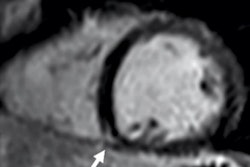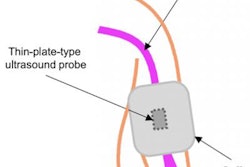
Echocardiograms revealed evidence of cardiac remodeling among elite athletes in the Women's National Basketball Association (WNBA), according to the findings of a landmark study published on June 24 in JAMA Cardiology.
Prior research has looked at heart changes in male professional basketball players, but this was the first large-scale study to look at cardiac adaptations among elite female basketball players. The findings are particularly important in an era where more girls and women are participating in sports.
"The results provide important additive cardiac reference data for female athletes and, to our knowledge, are the only such reference data for female basketball players," wrote the authors, led by Dr. Sofia Shames, from the Columbia University Irving Medical Center division of cardiology.
The researchers looked at echocardiography imaging findings for 140 of the 144 active roster players in the WNBA's 2017 season. The basketball association requires annual rest and stress echocardiograms for players, which team physicians performed using 2D echocardiography.
Out of the 140 players, 26% had left ventricular enlargement and 42% had right ventricular enlargement as defined by the American Society of Echocardiography (ASE) guidelines. Both metrics were significantly associated with players' body surface area, a formula calculated using a player's height and weight.
Other findings included the following:
- 41% of players had left atrial enlargement and 18% had right atrial enlargement
- 56% of players had maximal left ventricular wall thickness (LVWT) of at least 1 cm; only 0.7% of players had LVWT exceeding 1.3 cm
- 23% of players with normal left ventricular mass readings had concentric remodeling
- 16% of players met the ASE criteria for left ventricular hypertrophy
- 1.4% of players met the guideline for aortic enlargement
The WNBA players had higher relative wall thickness and indexes of concentric geometry than other types of female athletes, suggesting that cardiac remodeling may be more prominent in basketball. Left ventricular hypertrophy and an LVWT exceeding 1.3 cm were also far less prevalent for WNBA players than for male basketball players.
The findings also revealed many significant relationships between body surface area and echocardiography measurements. This was particularly noteworthy for right ventricular chamber measurements, as almost half of the WNBA players met the ASE criteria for right ventricular chamber enlargement.
Right ventricular chamber enlargement is a common finding for all types of athletes and may be related to both body size and heart remodeling associated with athletic training. Based on their research, the authors recommended that the ASE modify its guidelines to index cardiac findings according to an athlete's sex and body size.
"The data presented here for female professional basketball players may provide a framework to help define the upper limits of athletic cardiac remodeling in this important athlete group," the authors concluded. "The findings provide new reference data in this athletic population and will perhaps act as a stimulus to investigate sex-specific cardiac changes in other athletic disciplines."



















